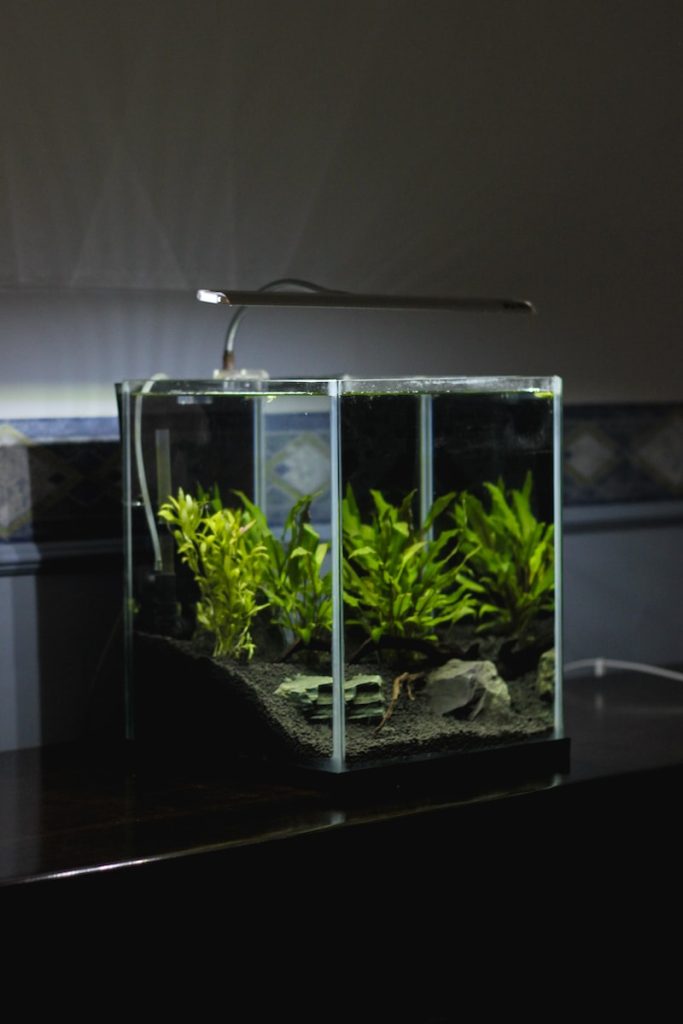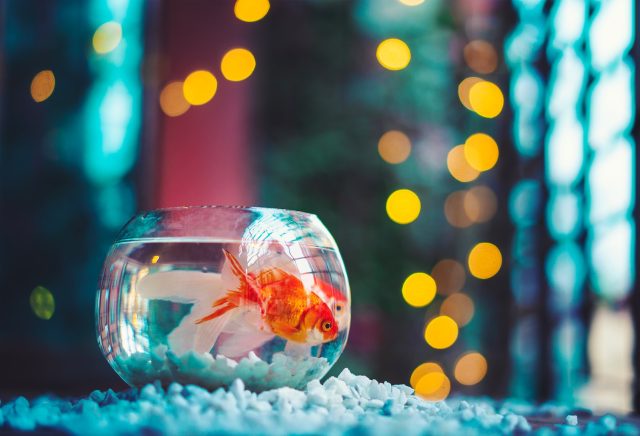Fishkeeping is a rewarding hobby that people of all ages and walks of life can enjoy. Fishkeeping can provide many benefits if you’re looking for ways to relax, engage with nature, or add a unique element to your home. But with so many species and setups to choose from, it can be difficult to know where to start. This article will provide a beginner’s guide on how to get started in the world of fish keeping.
Fishkeeping Basics
Fishkeeping can be a rewarding and enjoyable hobby for people of all ages. However, it’s important to understand the basics before starting your own aquarium. Firstly, you need to choose the right size tank for the fish you want to keep. A larger tank will provide a more stable environment for your fish and allow for better filtration. Secondly, you need to cycle your tank before adding any fish. This process involves establishing a beneficial bacteria colony that will help break down waste and keep the water clean. Thirdly, it’s important to choose fish compatible with each other in terms of size, temperament, and water requirements. Lastly, maintaining the cleanliness of the tank and monitoring water parameters such as temperature, pH, and ammonia levels are essential to keeping your fish healthy and happy. Following these basic principles can create a thriving aquatic environment for your fish to enjoy.
Choosing the Right Tank

Choosing the right size tank is crucial for the health and well-being of your fish. When selecting a tank, it’s important to consider the size and number of fish you want to keep. Generally, it’s recommended to have at least 1 gallon of water for every inch of fish. However, some species may require more space than others, so it’s important to do your research before making a purchase.
A larger tank will provide more stability regarding water quality and temperature fluctuations. It also allows for better filtration and circulation, essential for maintaining a healthy environment for your fish. Additionally, a larger tank will provide more room for decoration and provide your fish with ample space to swim and explore.
Regarding the shape of the tank, a rectangular or square-shaped tank is recommended over a round or bowl-shaped tank. This is because a rectangular tank provides more surface area for oxygen exchange and allows for better water flow, which helps to maintain water quality. Additionally, a rectangular tank is easier to decorate and clean than a round or bowl-shaped tank.
Overall, choosing the right tank is an important aspect of fishkeeping. By selecting a tank with the right size and shape for your fish, you can create a healthy and enjoyable environment for your aquatic pets.
Creating a Healthy Environment
Creating a healthy environment for your fish is essential for their well-being and longevity. There are several factors to consider when setting up and maintaining an aquarium, including filtration, water quality, and temperature.
Filtration is important for removing harmful toxins and waste from the water. Several types of filtration systems are available, including hang-on-back filters, canister filters, and sponge filters. The type of filter you choose will depend on the size of your tank and the type of fish you keep.
Water quality is another important factor to consider when creating a healthy environment for your fish. It’s important to regularly test the water for pH, ammonia, nitrite, and nitrate levels. Ammonia and nitrite are toxic to fish and can lead to illness or death if levels become too high. Nitrate is less toxic but can still be harmful in high concentrations. Regular water changes and proper filtration can help maintain good water quality.
Temperature is also important for the health of your fish. Most tropical fish require a water temperature between 75-80 degrees Fahrenheit. Investing in a reliable heater and thermometer is important to ensure the temperature remains stable.
In addition to these factors, it’s important to provide your fish with a suitable environment. This includes appropriate decorations, such as plants and rocks, and adequate space for swimming and hiding. A healthy diet and regular observation of your fish can also help maintain a healthy environment.
Creating a healthy environment for your fish requires attention to detail and regular maintenance. By providing your fish with suitable habitats and maintaining good water quality, you can help ensure their health and happiness.
Selecting Fish Species
Selecting suitable fish species is an essential aspect of fishkeeping. When choosing fish, it’s important to consider size, temperament, and water requirements.
Size is an important factor to consider when selecting fish. Some fish species can grow quite large and require a large tank. It’s important to research the adult size of the fish you are considering and ensure that you have a tank that is appropriate for their needs.
Temperament is another important factor to consider. Some fish species are more aggressive than others and may not be suitable for a community tank. It’s important to research the temperament of the fish you are considering and ensure that they are compatible with other fish in your tank.
Water requirements are also important to consider. To thrive, some fish species require specific water parameters, such as pH and temperature. It’s important to research the water requirements of the fish you are considering and ensure that they are compatible with your current setup.
In addition to these factors, it’s essential to consider the level of care required for the fish species you are considering. Some fish require more specialized care than others and may not be suitable for beginner fish keepers. It’s important to do your research and ensure that you can provide the appropriate level of care for the fish you are considering.
Overall, selecting the right fish species is an important aspect of fishkeeping. By considering factors such as size, temperament, and water requirements, you can ensure that you choose fish that are compatible with your setup and that will thrive in your aquarium.
Feeding and Maintaining Your Tank
Feeding and maintaining your tank are crucial aspects of fishkeeping. Proper feeding and maintenance can help ensure the health and longevity of your fish.
Feeding your fish the right diet is important for their overall health. Different fish species have different dietary requirements, so it’s important to research the specific needs of the fish you are keeping. Most fish will do well on high-quality commercial fish food, but some may require live or frozen food such as brine shrimp or bloodworms.
It’s important not to overfeed your fish, as excess food can lead to poor water quality and potential health problems. A good rule of thumb is to feed your fish only what they can consume in a few minutes, once or twice a day.
Maintaining your tank involves several tasks, including water changes, filter maintenance, and tank cleaning. Water changes are important for removing accumulated waste and keeping the water quality in check. It’s recommended to perform a 10-20% water change weekly or bi-weekly, depending on the size of your tank.
Filter maintenance involves cleaning or replacing filter media to ensure the filtration system functions appropriately. Following the manufacturer’s instructions when cleaning or replacing filter media is important to avoid disrupting the beneficial bacteria that help maintain water quality.
Tank cleaning involves removing any accumulated debris or waste in the tank. It’s recommended to perform a thorough cleaning every 4-6 weeks, which involves removing decorations and vacuuming the gravel to remove debris.
Overall, feeding and maintaining your tank require regular attention and care. By providing your fish with a healthy diet and maintaining a clean and stable environment, you can help ensure their health and happiness.
Troubleshooting Common Problems
As a fishkeeper, it’s important to be able to troubleshoot common problems that can arise in your aquarium. The most common issues include poor water quality, disease, and aggression among fish.
Poor water quality is often caused by overfeeding or inadequate filtration. If you notice cloudy water or a foul odor, it’s important to test the water parameters and perform a water change if necessary. It’s also important to ensure that your filtration system is functioning properly.
Disease can also be a common issue in aquariums. Symptoms of the disease can include lethargy, loss of appetite, and abnormal behavior. If you notice any of these symptoms, isolating the affected fish and treating them with the appropriate medication is important. It’s also important to quarantine any new fish before adding them to your aquarium to prevent the spread of disease.
Aggression among fish can also be a problem in some aquariums. Some fish species are more territorial than others and may become aggressive towards other fish. If you notice any aggressive behavior, it’s important to ensure that your tank has adequate hiding spaces and that the fish are not overcrowded. If necessary, you may need to remove the aggressive fish from the tank.
In addition to these common problems, it’s important to be aware of other issues, such as water temperature fluctuations, inadequate lighting, and inadequate nutrition. Regular observation of your fish and tank can help you identify and address any potential issues before they become major problems.
Overall, troubleshooting common problems in your aquarium requires attention to detail and a willingness to take action when necessary. By being proactive and addressing issues as soon as they arise, you can help ensure the health and happiness of your fish.
Conclusion
In conclusion, fishkeeping can be a rewarding and enjoyable hobby but requires knowledge and attention to detail. Choosing the right tank and creating a healthy environment is crucial for the well-being of your fish. Selecting the right fish species, feeding them the right diet, and maintaining your tank properly are also important aspects of fishkeeping. Troubleshooting common problems is an essential skill for any fishkeeper, as it can help prevent potential issues from becoming major problems. With the right knowledge and care, you can create a thriving and beautiful aquarium that brings you and your fish joy for years to come.






























